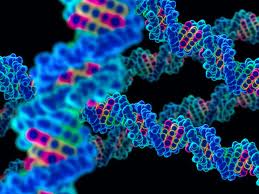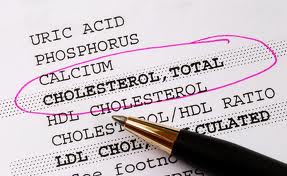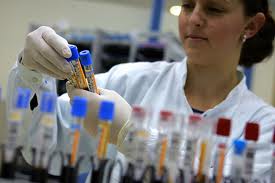 “The mean telomere length serves as a marker for the biological age at the cellular level, with shorter telomeres defining the increased biological age.”1
“The mean telomere length serves as a marker for the biological age at the cellular level, with shorter telomeres defining the increased biological age.”1
In part 1 of this series, we discussed the concept of biological aging and how this differs from chronological aging. We examined some of the research of Bruce Ames, Ph.D., and the evidence supporting the view that mitochondrial decay or dysfunction leads to accelerated aging and most of the degenerative diseases we see in the elderly today. We also introduced the concept of genomic stability (the ability to maintain the genome and prevent damage to the DNA) and how this is crucial in maintaining health and preventing chronic disease. In part 2, we will look at some of the clinical tools we have available to assess biological aging in the individual and examine what these specific biomarkers are telling us about what is happening inside the individual’s body. But first, let’s define what we mean by Successful Aging.

 Successful Aging Means the Avoidance of Chronic Disease
Successful Aging Means the Avoidance of Chronic Disease
We talked about “Successful Aging” in the first article in this series, but we haven’t really addressed what this actually means. What is “Successful Aging”? “Successful Aging” means simply, living a life free of disease until a late age and being physically and mentally active throughout this entire period of life. How common is this? Unfortunately, this is not the norm for most Americans today. Most Americans alive today will suffer from some type of chronic disease during their lifetime although average lifespan continues to increase. This means that more people are suffering with chronic disease and require more care as they age and become more dependent on life-saving surgeries and technology to keep them alive. This is actually where most of our U.S. healthcare dollars are spent. However, this trend in average lifespan is about to come to a halt. For the first time in history, studies indicate that American children will be the first generation to have a shorter lifespan than their parents. Why? Because they are developing chronic disease at an earlier age than their parents. These chronic diseases are closely associated with obesity, physical inactivity and poor nutrition, among other things. As obesity, nutritional deficiencies and lack of physical activity continues to increase, so does chronic disease and shorter lifespan is expected to follow. 2,3
Who would not want a life free of disease until a late age for themselves and their family? We cannot stop the aging process (at least not yet) but there are many things within our control that increase the chance of adding extra years to our life. More importantly, there are a large number of things we can do to improve the quality of life during this time that makes our lives more fulfilling. What is the use of living to 100 years old if you have poor quality of life and are dependent on others throughout your later years? Who wants to spend their later years suffering in chronic pain, bound to a wheelchair or suffering from dementia? Put another way: successful aging means aging gracefully without suffering from chronic disease.
 Successful Aging vs. Anti-Aging
Successful Aging vs. Anti-Aging
Are we talking about anti-aging?
No. We do not know how to stop the aging process. But there is accumulating evidence suggesting that we can slow it down and there is clear evidence that we can decrease our risk of chronic disease significantly by modifying our diet and lifestyle. This means that we have much more influence over whether we live a long healthy life than we previously thought.
Are we talking about hormone replacement?
The anti-aging movement, which is currently being promoted by some physicians and celebrities who are interested in this field, is often reduced to the use of hormonal therapy to replace low levels of hormones with synthetic (or bioidentical) hormones and return these low levels to youthful levels. This is not one or our goals in functional medicine. Hormone replacement can produce improvement in many different symptoms associated with low hormones and sometimes this is necessary, but there are always tradeoffs in any type of hormone therapy. These include atrophy of glands, decreased sensitization of the hormone receptor sites to the hormones, and loss of feedback loop integration (all hormones are produced by glands which are regulated by feedback mechanisms, just like a thermostat at your home). Whenever you introduce exogenous hormones into the body, you put yourself at risk of all of these things happening to some degree. The more hormones you take and the longer you are on hormone therapy, the bigger risk of developing these problems and the more difficult it is for a practitioner to correct. In other words, hormone therapy can throw a monkey wrench in your physiology. Hormonal therapy should be used judiciously and in the lowest levels possible.
 How do we assess biological aging?
How do we assess biological aging?
Biological aging has been a subject of scientific research for at least the past 40 years. In the mid-1970’s, a few American researchers discovered regions of the ends of chromosomes (called telomeres) which became shorter each time the cell divided. It was noticed that chromosomes would stop dividing after about 50 replications. The inability of the cells to continue dividing was later found to be due to the shortening of these telomeres.
“Telomere shortening represents a cell-intrinsic mechanism leading to DNA damage accumulation”4
What are Telomeres and Why Are They Important?
Telomeres are repeated DNA patterns at the end of chromosomes that function to protect and maintain genomic stability. These telomeres protect the genes from assaults and toxins from our environment. You can think of the telomeres as the plastic ends of shoelaces that protect the DNA strands and prevent them from unraveling. What we now know is that there is a constant battle between agents that damage and shorten telomeres and those that protect them. As people age, the mean length of the telomeres decreases. Telomere shortening has been used in research as a marker of biological aging.
“The mean telomere length serves as a marker for the biological age at the cellular level, with shorter telomeres defining the increased biological age.”5
However, mean telomere length of an individual is not a practical tool that can be used easily in a clinical setting to assess biological aging. In the clinic, we need to rely on other easily accessible indicators of biological aging such as the person’s age, vital signs, presenting signs and symptoms and other validated biomarkers from routine blood chemistry or special lab assessments.
 Formulating Useful Potential Markers of Biological Aging
Formulating Useful Potential Markers of Biological Aging
First, we need to be clear that there is no consensus on reliable biomarkers of aging. The subject is still relatively new and theories of biological aging are still being worked out. However, if we accept the theory presented by Bruce Ames, Ph.D, as described in the first article, then we can draw the same conclusions as he has: namely, that mitochondrial decay and damaged DNA lead to accelerated aging and most of the degenerative diseases we see in the elderly today. The reason why this is such a powerful model is that it means that the same physiologic processes that drive biological aging are the same processes that lead to chronic disease, increased risk of poor quality of life and shorter lifespan. The corollary is that in order to slow down biological aging, we need to reduce our risk of developing chronic disease.
Let’s first look at some signs and symptoms which may be associated with chronic disease and then look at some validated disease biomarkers available via routine blood chemistry that are currently used to assess one’s risk of developing chronic disease. We will then consider biomarkers that can be used to assess the internal aging process. Keep in mind that having one or more of these signs or symptoms (or lab markers) does not necessarily indicate chronic disease or the degree of this. However, taken into consideration with other biomarkers, diagnostic tests and one’s signs and symptoms, these may be warning signs or indicators of disease. Laboratory results should always be assessed in conjunction with other lab markers and assessments and provide the clinician with useful information about risk of disease.
 Signs and Symptoms Which May be Associated with Disease
Signs and Symptoms Which May be Associated with Disease
- Pain or difficulty moving or difficulty exercising
- Fatigue or low energy
- Shortness of breath
- Chest pain
- Poor digestion
- Gas, bloating and abdominal discomfort
- Constipation
- Incontinence
- Difficulty with urination
- Loss of memory
- Brain fog
- Depression
- Difficulty maintaining balance
- Shaking or tremors
- Frequent colds or infections
- Difficulty recovering from infections
- Decreased bone density
- Frequent bone fractures
 Validated Biomarkers for Assessing Risk of Chronic Disease
Validated Biomarkers for Assessing Risk of Chronic Disease
- Cholesterol
- LDL (“bad” cholesterol): indicator of risk of cardiovascular disease
- HDL (“good” cholesterol): indicator of protection against cardiovascular disease
- Triglycerides: strong indicator of insulin resistance, pre-diabetes and fatty liver; insulin resistance is the #1 cause of type 2 diabetes
- Apo A1:Apo B ratio: strong indicator of heart attack risk
- Fasting glucose and insulin levels: strong indictors of insulin resistance
- HbA1C (glycosylated hemoglobin): stable and reliable indicator of prediabetes and diabetes and used to monitor progression of diabetes
- ALT, AST: indicators of liver disease (hepatitis, fatty liver, etc.)
- GGT: indicator of alcohol and drug problems, toxicity exposure and risk factor for diabetes
- CRP or hs-CRP: indicator of systemic inflammation (inflammation throughout the body) and risk factor for heart attack and stroke
- Homocysteine: risk factor for heart attack, stroke and dementia
- Uric acid: indicator of metabolic health and risk of gout
- TSH, T4, T3: markers of thyroid function
- Antibody profile: ANA, anti-CCP, anti-gliadin, anti-TPO, anti-thyroglobulin; (strong connection between gluten sensitivity and risk of autoimmune disease)
- PSA: indicator of prostate health
- Blood pressure: risk factor for stroke
- Body composition (BIA): risk factor for many chronic diseases
- Lp(a): risk factor for heart attack
- Vitamin D: deficiency is increased risk factor for many types of cancer, cardiac disease and immune dysfunction
 Risk Factors for Future Cardiovascular Events: World Heart Federation
Risk Factors for Future Cardiovascular Events: World Heart Federation
What factors place people at risk for developing cardiovascular disease (heart attack or stroke) as they grow from youth to adulthood? The following blood chemistry markers have been identified with increased risk of cardiovascular events by the World Heart Federation (in order of relative risk of cardiovascular events):
- Lipoprotein(a)
- Homocysteine
- Total cholesterol (TC)
- LDL-C
- Apo B
- TC: HDLC (ratio of TC to HDL cholesterol)
- HsCRP
Now that we have a list of biomarkers used to assess risk of disease, we can start to formulate a list of modifiable characteristics (signs of healthy aging that we have some control over) and some useful potential biomarkers of aging.
 Modifiable Characteristics of Aging
Modifiable Characteristics of Aging
- Cardiovascular fitness
- Muscular strength
- Flexibility
- Hearing acuity
- Skin elasticity and tone
- Pulmonary function
- Memory
- Inflammatory disorders
- Bone loss
Potential Biomarkers of Biological Aging vs. Chronic Disease Evaluation
If we accept the work of Bruce Ames, Ph.D, and others who have pioneered the field of biological aging and accept the premise that the same processes that lead to accelerated aging lead to chronic disease, then we find we can use these same biomarkers used to identify chronic disease in the evaluation of risk of biological aging. This is exactly what we do in functional medicine. However, the interpretation of these lab results may be quite different depending on the range being used for comparison. For example, in functional medicine, we use functional ranges as the standard for evaluation of lab markers, which may differ substantially from the lab’s ranges. Lab ranges are pathological ranges used to diagnose disease. Functional ranges are used to assess risk for disease before disease develops. The main difference between the two is the degree of deviation allowed within their normal ranges. Levels outside pathological ranges may indicate disease. Levels outside the functional range usually indicate an imbalance and may indicate risk of developing disease. Functional ranges are science-based ranges. These are ranges derived from the literature which various medical experts and organizations have concluded to be the range of variance for those in ideal health. Functional ranges are basically pathological ranges “tightened up”.
 At this point, there are no lab ranges for biological aging. However, if we accept Dr. Ames’ model of biological aging, it makes complete sense to use functional ranges to identify risk of biological aging. Those whose lab markers fall within the functional range are in a state of ideal health and have the least risk of accelerated aging and chronic disease.
At this point, there are no lab ranges for biological aging. However, if we accept Dr. Ames’ model of biological aging, it makes complete sense to use functional ranges to identify risk of biological aging. Those whose lab markers fall within the functional range are in a state of ideal health and have the least risk of accelerated aging and chronic disease.
In addition to these markers as identified above, there are other markers which can also provide insight into one’s risk of accelerated aging based on our understanding of how glycosylation, inflammation and low hormone levels increase risk of chronic disease:
- Glycosylated proteins such as hemoglobin (HbA1C already being used as an indicator of risk of pre-diabetes or diabetes) and albumin (which leads to “crusty proteins”)
- Increased inflammatory markers (TNfα, IL-6, CRP)(CRP is well-accepted marker of inflammation which is now being correlated with increased risk of almost all chronic disease—a subject we will explore in part 3 of this series)
- Low anabolic hormone levels (ie: testosterone for men, estrogen for women) and increased stress hormone markers (ie: cortisol)
 Conclusions
Conclusions
What do all these markers tell us about biological aging? How do we know the extent of biological aging by evaluating these markers? These are good questions and we cannot say with certainty that any individual’s biology is aging at any particular rate by examining only these biomarkers. What we do know is that one’s risk of various chronic diseases increases as these biomarkers fall out of the functional and pathological ranges. We also know from the research by Dr. Ames and others, that excess oxygen radical activity or reactive oxygen species (ROS) easily damages the mitochondria and can damage the DNA. Increasing evidence is showing that mitochondrial decay and damage to the DNA drive the biological aging process leading to chronic and degenerative diseases. So we can infer that accelerated aging processes are occurring in individuals who have lab markers that are not within the ideal range or who have (or are developing) signs and symptoms of chronic disease.
 The Development of “Risk” Over Time
The Development of “Risk” Over Time
A final word about “risk of disease”: risk is a variable concept that occurs on a continuum; it doesn’t happen overnight. Risk can develop suddenly but usually develops gradually over time. Risk factors can vary from weak to strong, depending on the “normal” or “accepted” range. The more risk factors and the longer an individual maintains these risk factors, the higher risk of disease. The earlier you can intervene in an emerging disease pattern, the easier it is to make a change in trajectory of that disease. This is why we take an aggressive preventative approach in the functional medicine model which often includes dietary and lifestyle change and the use of key nutrients when we see signs of an imbalance or risk of developing disease.
In parts 3, 4 and 5 of this series, we will focus on the major mechanisms of chronic and degenerative disease, including obesity, insulin resistance, diabetes, inflammation, autoimmunity, food sensitivities (ie: gluten), intestinal permeability, toxicity, hormonal imbalances, gut dysbiosis and GI infections.
References:
1. Expert Opinion on Therapeutic Targets July 2007, Vol. 11, No. 7,
2. Diab Vasc Dis Res. 2007 Dec;4(4):285-96. Epidemiology of paediatric metabolic syndrome and type 2 diabetes mellitus. De Ferranti SD, Osganian SK.
3. Future Child. 2006 Spring;16(1):47-67. The consequences of childhood overweight and obesity. Daniels SR.
4. Journal of Molecular Medicine Volume 87, Number 12 / December, 2009
5. Expert Opinion on Therapeutic Targets July 2007, Vol. 11, No. 7